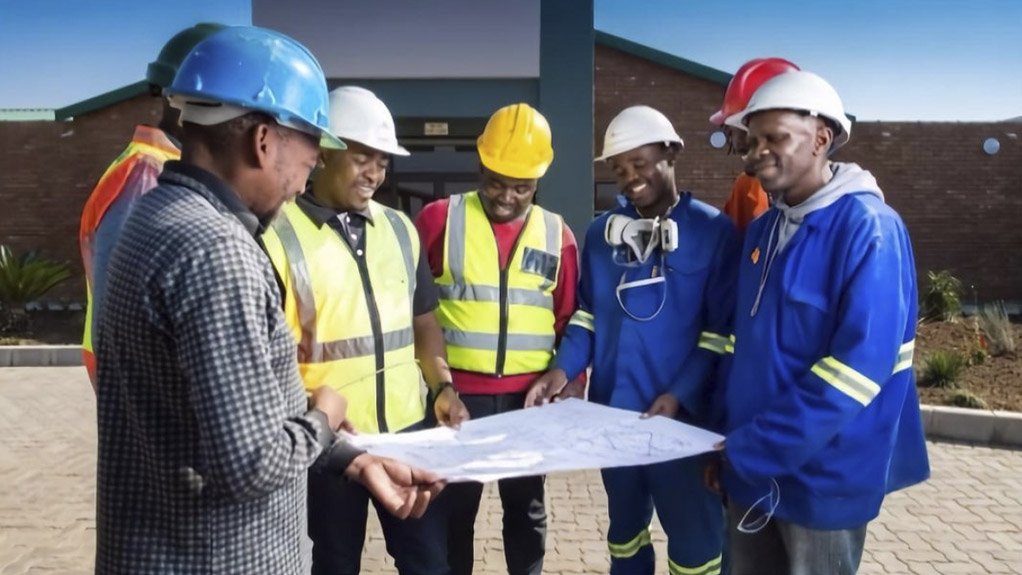JOHANNESBURG (miningweekly.com) – Diversified mining and marketing company on Wednesday reported 43% higher ferrochrome production in its full year 2021 production report.
The South Africa-centred ferrochrome output rose from 1 029 000 t in 2020 to 1 468 000 t in 2021.
Also up was oil output, which was 34% higher, 20% more coking coal was produced totalling 9.1-million tonnes, and cobalt was 14% up at 31 300 t.
Otherwise, the outputs of all other commodities were down, including overall coal being 3% lower, copper declining by 5%, zinc down 4%, lead down 14%, nickel 7% down, gold 12% down and silver4% down.
Glencore CEO Gary Nagle described the 2021 operating environment as remaining challenging, with the Covid-19 pandemic again dominating the daily lives of many colleagues, families, local communities and society at large.
“As a responsible operator, our top priority is to protect the safety and health of our people and the communities that host our businesses. Maintaining production in 2021 became increasingly important as many of our products, so crucial for decarbonisation, energy supply and industrial output, saw higher levels of demand.
“Overall, our operations largely performed in line with guidance expectations. We completed the Cerrejón acquisition and Ernest Henry disposal in January, such transactions being consistent with our continued strategy to simplify and align our portfolio with the materials needed for the energy transition and the responsible decline of our coal business,” Nagle stated in a release to Mining Weekly.
Own sourced copper production of 1 195 700 t was 62 400 t lower than 2020 owing mainly to the disposal of Mopani (23 800 t), lower copper grades at Antapaccay (14 800 t) and lower copper by-products from Glencore’s mature zinc and nickel mines (26 600 t).
Own sourced cobalt production of 31 300 t was 3 900 t higher than 2020 due to the limited restart of production at Mutanda mine in 2021. Mutanda, a large opencast copper/cobalt mine in the Katanga province of the Democratic Republic of the Congo, was closed temporarily in November 2019.
Own sourced zinc production of 1 117 800 t was 52 600 t lower reflecting mainly the decline of Maleevsky mine in Kazakhstan, being lagged by the slower than expected ramp-up of replacement Zhairem mine tonnage of 19 600 t; Mount Isa producing additional metal from ore stockpile drawdowns in the base period (24 400 t); and Kidd lower grades at Kidd (13 800 t). These factors were partly offset by stronger zinc production at Antamina, which was suspended for part of 2020 owing to Covid restrictions.
Nickel production of 102.300 t was 7 900 t lower than in 2020, mainly due to the lengthy scheduled statutory shutdown and maintenance issues at Murrin Murrin earlier in the year.
Attributable ferrochrome production was 439 000 t higher owing to South Africa’s national lockdown in the prior year, and a strong operating performance.
Coal production of 103.3-million tonnes was 2.9-million tonnes lower, reflecting Prodeco’s care-and-maintenance status and lower domestic power demand/export rail capacity constraints in South Africa, offset by higher production at Cerrejón, following a Covid suspension and strike in 2020.
Oil entitlement interest production of 5.3 million boe was 1.3 million boe higher mainly owing to commencement of the gas phase of the Alen project in Equatorial Guinea. There was no production from the Chad fields in 2021.
In early January 2022, Glencore completed the acquisition of the two-thirds of Cerrejon which it did not already own. The Ernest Henry copper mine disposal was completed in early January.
Deutsche Bank Research analysts described Glencore’s fourth-quarter production as being slightly softer than expected, and full-year production as being at the bottom end of guidance for each division. Although production guidance had been left unchanged, the analysts expressed the view that the bottom end of guidance appeared the more realistic scenario given supply chain issues.
Edison Group energy and resources director Lord Ashbourne commented that continued portfolio streamlining and steady improvement of the operating environment had left Glencore well placed to continue navigating the uncertainty of the pandemic and maintaining strong production of its essential materials.
EMAIL THIS ARTICLE SAVE THIS ARTICLE ARTICLE ENQUIRY
To subscribe email subscriptions@creamermedia.co.za or click here
To advertise email advertising@creamermedia.co.za or click here













